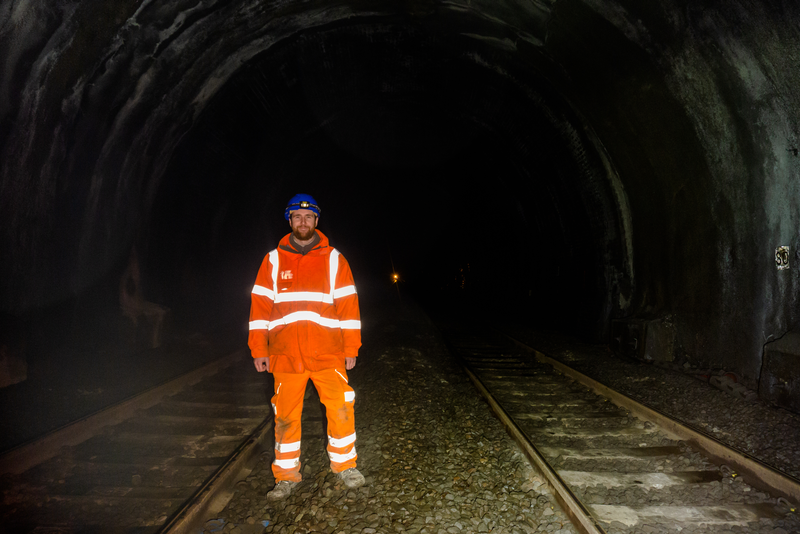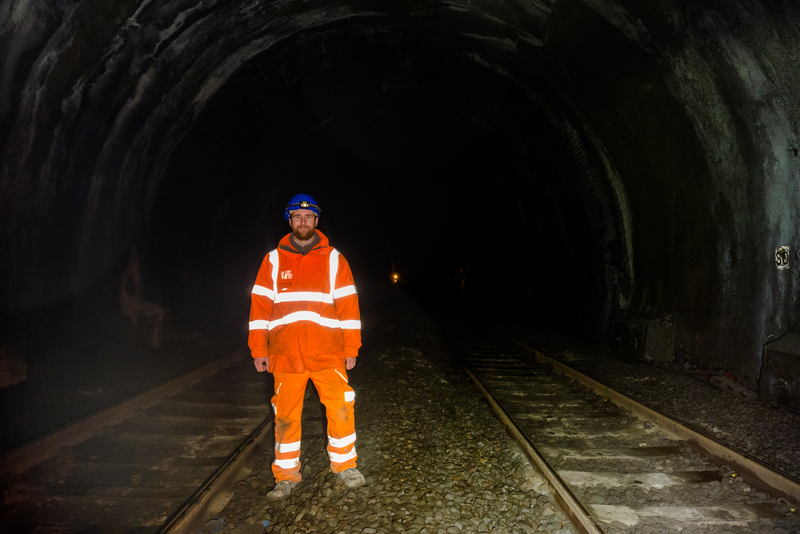Q&A: Muons Find Tunnel Cavities
Particle physicists are traditionally known for smashing particles together at colossal speeds and then scouring the debris for signs of new particles. But not Patrick Stowell. A neutrino physicist at the University of Sheffield, UK, he has another goal for these subatomic objects: using them to solve industrial problems. Stowell takes advantage of high-energy muons—particles similar to electrons but much heavier—that are created when cosmic rays interact with Earth’s atmosphere. He has used these muons to divulge the contents of sealed nuclear waste drums without opening them and to uncover cavities hidden behind the brickwork of railway tunnels. These voids leave a tunnel wall unsupported, causing it to weaken and potentially collapse, and they are a problem in the UK’s aging railway system. Physics spoke to Stowell to find out how muons can see the unseen and what he does in the hours he spends camped out in dark and damp railway tunnels.
–Katherine Wright
Why are high-energy muons good for imaging the unseen, such as a void in a rock?
High-energy muons are highly penetrating. They can punch through meters and meters of rock like it isn’t even there. You can’t really use them to image small things; to take an x-ray-like picture of someone’s teeth with muons would be difficult and would require them to sit for many months in a dentist’s chair. But you can use muons to look at things that are incredibly big—rock structures, volcanoes, and buildings—or incredibly dense, such as the uranium in a nuclear waste drum.
How does your void-imaging technique work?
It works exactly the same way as an x ray. We go underground with a camera that is sensitive to muons and take a picture. We know what the distribution of muons should be if there were no rock above the camera; that's been incredibly well measured and modeled. Any variation from that distribution comes from the rock. Knowing that variation is enough to map the density of whatever overlies the camera.
What are the limitations of the technique?
A big constraint is image contrast. The technique is sensitive to density differences. If you try to image a feature made of different rock types, you won’t be able to see anything if their density doesn’t change significantly.
Another limitation is exposure time. Roughly one cosmic muon passes through your fingernail every minute, which isn’t very many. For imaging purposes, that means you need to look at an object for a very long time if you want a high-resolution image.
How did you get around these limitations to image cavities in railway tunnels?
Initially we thought about putting the detector somewhere outside of the tunnel and imaging the whole tunnel at once. But there you run into contrast problems, as the voids are much smaller than the kilometers-long tunnels. Instead we decided to drive through the tunnel and take measurements as we went. We took many images, each at a different position in the tunnel, and then compared the number of muons in each image. The idea was that a void should be accompanied by a spike in the number of muons detected.
Did it work?
Yes. We did a field trial in October 2018 at Alfreton Old Tunnel. It’s near Sheffield and it’s disused, so there aren’t any trains coming through. The tunnel also has three open ventilation shafts, which we hoped would tell us whether the technique worked. And it did; we saw muon spikes as we passed under the shafts.
We didn’t know at the time, but the tunnel also has a hidden void. We did a full scan of the tunnel at five-meter intervals and we noticed an extra bump in the data, which we couldn’t explain. We told our engineering partners, “we think there’s a void here” and they said, “oh, yeah, we know that’s there.”
Is the technique practical for tunnels that are in use?
Yes. Because of the success at Alfreton, we formed a spin-out company, Geoptic Ltd, that offers this surveying technique to rail engineers. We did our first company field trial in October 2019 on Morley Tunnel, north of Sheffield, during overnight “possessions”: At midnight, the train services stop and then there is a five-hour window for maintenance work. Over the course of a week we went to the tunnel every night for a few hours and took measurements.
The nice thing about this technique is that it can be used in situations where you have strict time constraints and where you have to take the detector out. You can cover five or ten meters of tunnel in one night. And then come back the next night and image the next ten meters, and so on.
What was it like hanging out in a railway tunnel at midnight?
Very dark, very cold, and very damp; it rained a lot. There is a lot of time sitting around waiting for data: you drive the kit into the tunnel, turn the detector on, and then sit for half an hour. It’s worth bringing a book.
Katherine Wright is a Senior Editor for Physics.
Know a physicist with a knack for explaining their research to others? Write to physics@aps.org. All interviews are edited for brevity and clarity.





